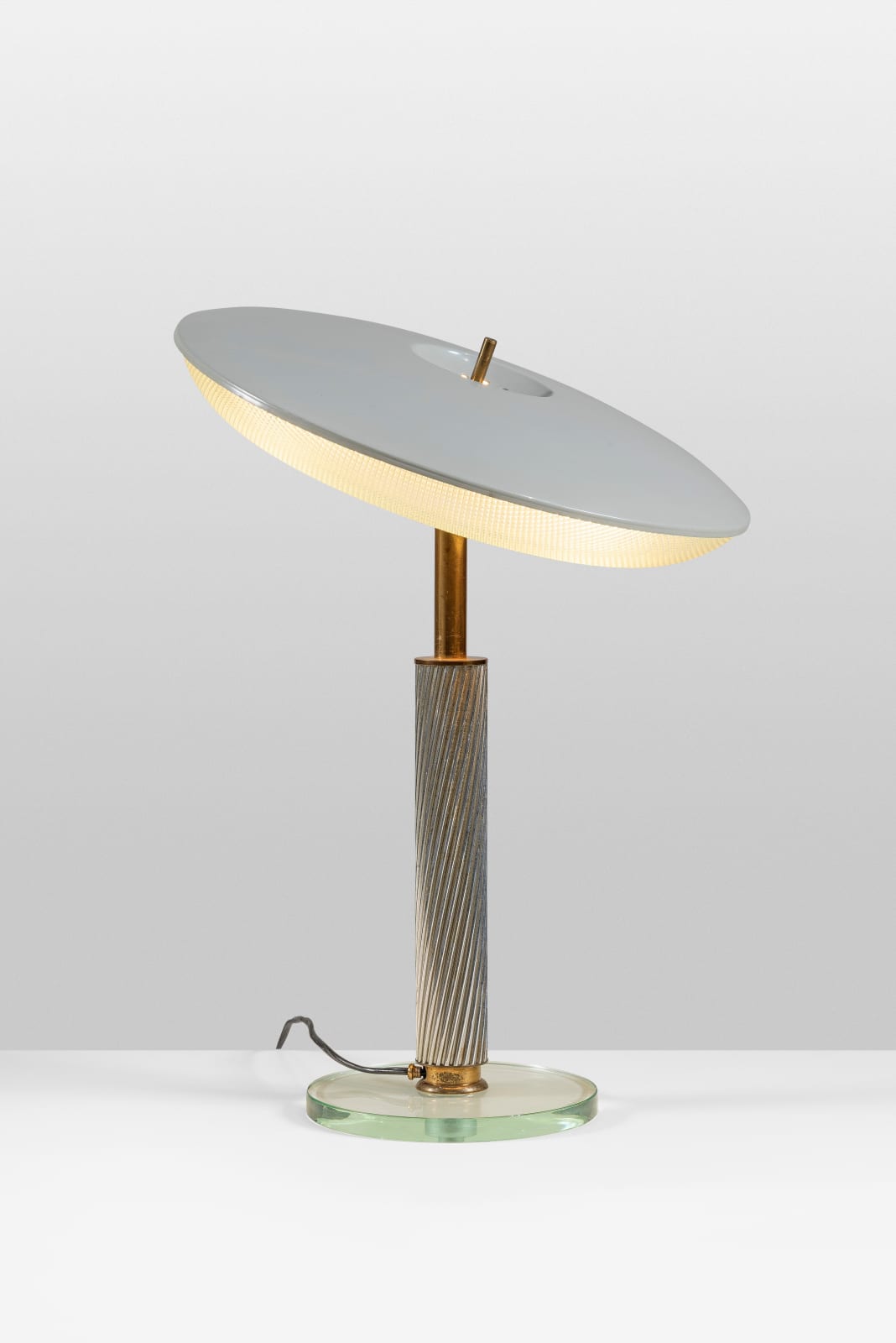
Pietro Chiesa
Table lamp, 1940
Glass, brass, twisted silvered metal and cream lacquered metal
45 x 37 cm
17 3/4 x 14 5/8 in
17 3/4 x 14 5/8 in
Édition Fontana Arte
Designed around 1940 by Pietro Chiesa for Fontana Arte, this table lamp exemplifies the refined and functional elegance of Italian modernism in the pre-war era. Chiesa, a master glassmaker, brought...
Designed around 1940 by Pietro Chiesa for Fontana Arte, this table lamp exemplifies the refined and functional elegance of Italian modernism in the pre-war era. Chiesa, a master glassmaker, brought to Fontana Arte a vocabulary rooted in architectural clarity, innovative materials, and artisanal excellence.
The lamp’s design—characterized by a wide, slightly tilted glass shade, a twisted silvered metal stem, and a lacquered metal base—reveals Chiesa’s talent for integrating sculptural form with technical sophistication. The subtle interplay of polished and matte surfaces, along with the balanced geometry of the silhouette, reflects the broader aesthetic of the Rationalist movement: restrained, precise, yet expressive.
Under Chiesa’s artistic direction in the 1930s and early 1940s, Fontana Arte became a key laboratory for avant-garde lighting and furniture design, combining the traditional craft of glasswork with modern industrial processes. This piece, likely produced in limited numbers, illustrates that duality perfectly. The twisted rod evokes both decorative and structural intentions, creating a sense of vertical movement while showcasing the artisanal craftsmanship typical of northern Italian metalwork of the time.
The lamp’s design—characterized by a wide, slightly tilted glass shade, a twisted silvered metal stem, and a lacquered metal base—reveals Chiesa’s talent for integrating sculptural form with technical sophistication. The subtle interplay of polished and matte surfaces, along with the balanced geometry of the silhouette, reflects the broader aesthetic of the Rationalist movement: restrained, precise, yet expressive.
Under Chiesa’s artistic direction in the 1930s and early 1940s, Fontana Arte became a key laboratory for avant-garde lighting and furniture design, combining the traditional craft of glasswork with modern industrial processes. This piece, likely produced in limited numbers, illustrates that duality perfectly. The twisted rod evokes both decorative and structural intentions, creating a sense of vertical movement while showcasing the artisanal craftsmanship typical of northern Italian metalwork of the time.